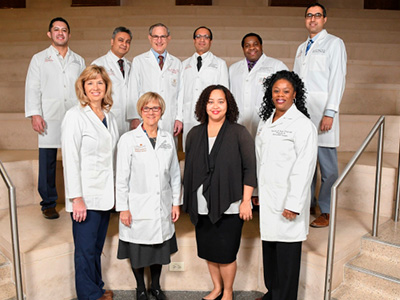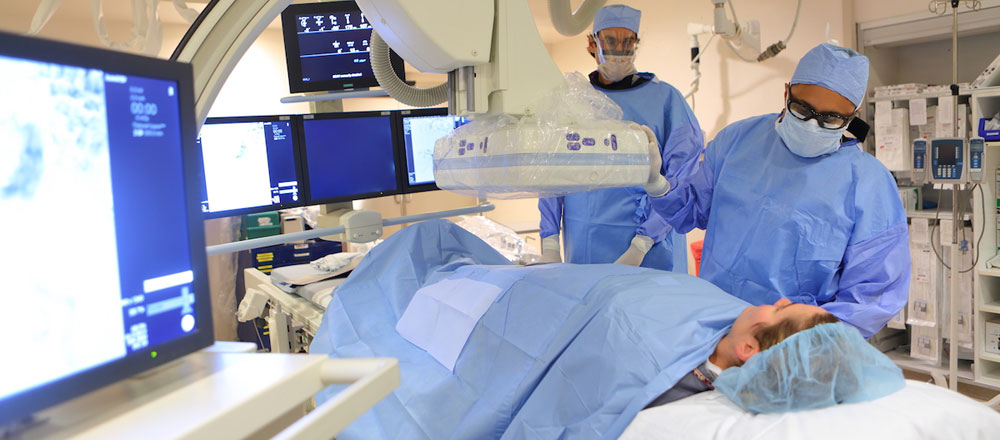- What is Interventional Radiology? Interventional radiology (IR) is a medical sub-specialty of radiology utilizing minimally-invasive image-guided procedures to diagnose and treat diseases in nearly every organ system.
- Interventional radiology (IR) or vascular and interventional radiology (VIR) is a sub-specialty of radiology in which minimally invasive procedures are performed using image guidance. Some of these procedures are done for purely diagnostic purposes (e.g., angiogram), while others are done for treatment purposes (e.g., angioplasty).
WORKING IN VASCULAR INTERVENTIONAL RADIOGRAPHY
Interventional Radiology (IR) is one of the most technologically advanced imaging specialties of medicine that has pioneered some of medicine’s greatest advancements including angioplasty and stenting. In the past year interventional radiology has exponentially grown with minimally invasive image-guided techniques.
As a vascular interventional radiographer, you’ll assist physicians with minimally invasive, image-guided vascular procedures, including angioplasty, stenting, thrombolysis, and more. Using sophisticated fluoroscopic equipment, you’ll be responsible for capturing images of the blood vessels.
Working in a hospital, clinic, lab, or outpatient center, you’ll have a rewarding job and be an important part of a medical team caring for patients.
EARN ARRT CREDENTIALS IN VASCULAR INTERVENTIONAL RADIOGRAPHY
The purpose of ARRT certification and registration in Vascular Interventional Radiography is to recognize individuals who are qualified to perform the role of a Vascular Interventional Radiographer. To earn ARRT certification and registration in this discipline, you'll use our postprimary eligibility pathway. This requires, among other things, that you already hold ARRT credentials in an approved supporting discipline. In some cases, you may earn your supporting credential through another organization. Learn more about eligibility requirements and view additional resources below.
REVIEW OUR REQUIREMENTS



Earning ARRT certification and registration is challenging, yet very achievable. It will take time and commitment—but your hard work will pay off. Learn more about the requirements you'll need to meet along the way, including those in education, ethics, and examination.
READ THESE DOCUMENTS
- Clinical Experience Requirements: explains the type and quantity of clinical procedures that you'll need to complete
- Structured Education Requirements: outlines the education activity requirements for this discipline
- Examination Content Specifications: outlines the topics that appear on our Vascular Interventional Radiography exams
- Task Inventory: lists the job responsibilities typically required of technologists working in Vascular Interventional Radiography
LEARN HOW TO APPLY
The application process for ARRT certification and registration has many detailed steps—but don't worry. We have a range of resources to guide you. Start by downloading our postprimary eligibility pathway application handbook below.
Interventional Technologist Programs
QUESTIONS? WE'RE HERE TO HELP.
If you have questions about eligibility, our requirements, or applying, we're here to help. Contact us at 651.687.0048, then choose the option for earning an ARRT credential..
Interventional Radiography Programs Program
If you're an R.T., you can find additional resources by logging into your online account and selecting 'Pursue Postprimary' from the Complete Business tab.
Interventional Radiography Programs
The mission of the Interventional Radiology Division at the University of Colorado Anschutz Medical Campus is to provide the best care to our patients, using innovative techniques across highly diversified medical and surgical subspecialties. We have a deep commitment to providing the highest quality trainee education at all levels, with a focus on developing future leaders in Interventional Radiology (IR). We have aligned clinical, translational, and basic science research interests to support our mission of scientific inquiry and discovery.
Our current one year fellows log between 1200 to 1800 cases in one year spanning the gamut of vascular, oncologic, hepatobiliary, dialysis, pain/palliative, genitourinary and gastrointestinal diseases. They also have the opportunity to gain experience in pediatric and neurointerventional procedures. Furthermore, they participate in multidisciplinary conferences, outpatient clinics and noninvasive vascular imaging.
Interventional Radiography Programs Training
The University of Colorado IR Residency will provide training for board certification in Interventional and Diagnostic Radiology. Through October 21, 2020, we will accept applications for our two IR residents matriculating in July 2022 via the integrated pathway. Applications are accepted through ERAS (ACGME ID 4160700001).
The interview days are coordinated with interview dates for the University of Colorado Diagnostic Radiology Residency to ease planning for those also applying to the Diagnostic Radiology program. Due to the COVID-19 Pandemic, all interviews will be conducted virtually.
This is a very exciting time in Interventional Radiology! All interested applicants are encouraged to contact our office for further information. Additionally, the Society of Interventional Radiology (SIR) website(https://www.sirweb.org/) has key facts relating to the new IR residency and other related IR topics.
If you have any questions regarding the residency, or questions for Program Director, Dr. Paul Rochon, please contact the program coordinator:

Mary Ball Department of Radiology University of Colorado Denver Mail Stop 8200 12631 East 17th Avenue Aurora, Colorado 80045
Mary.A.Ball@cuanschutz.edu Fax: (303) 724-6601 Phone: (303) 724-1984
